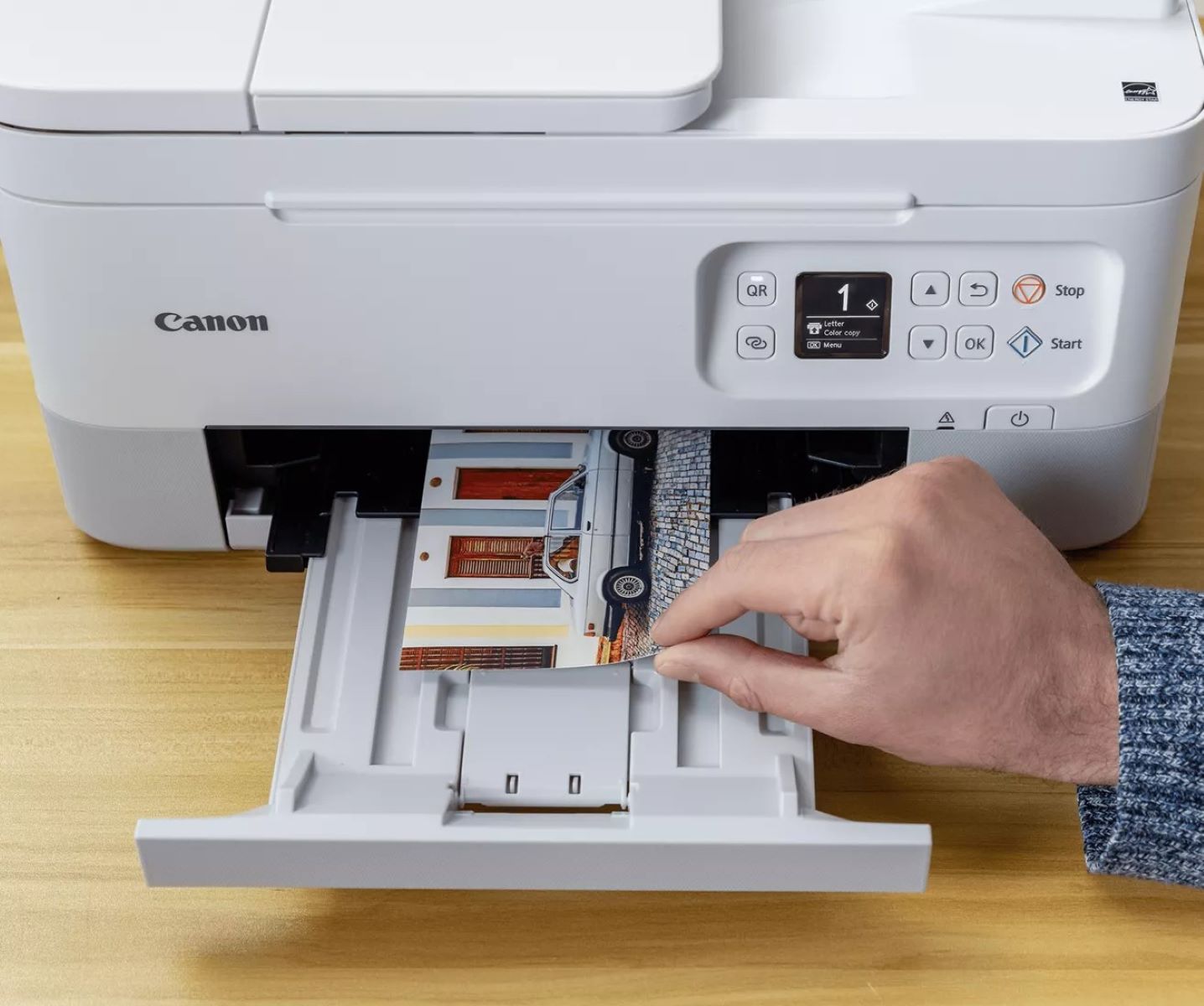Home>Technology>Smart Home Devices>How To Ping A Printer


Smart Home Devices
How To Ping A Printer
Modified: February 18, 2024
Learn how to easily ping a printer and troubleshoot connectivity issues with smart home devices. Get step-by-step instructions for seamless printing.
(Many of the links in this article redirect to a specific reviewed product. Your purchase of these products through affiliate links helps to generate commission for Storables.com, at no extra cost. Learn more)
Introduction
In the ever-evolving landscape of modern technology, the integration of smart home devices has become increasingly prevalent. These devices, ranging from thermostats and lighting systems to security cameras and printers, offer unparalleled convenience and efficiency. Among these, printers play a crucial role in both personal and professional settings, facilitating the seamless transformation of digital content into tangible documents.
The ability to troubleshoot and maintain printers is essential for ensuring their optimal functionality. One fundamental aspect of this maintenance is the process of "pinging" a printer. This article will delve into the intricacies of this process, providing a comprehensive guide on how to effectively ping a printer to verify its connectivity and address any potential issues.
By understanding the basics of pinging, identifying the printer's IP address, and executing the ping command, users can proactively monitor and troubleshoot their printers. Additionally, we will explore common issues that may arise during the pinging process and offer troubleshooting tips to overcome these obstacles.
Whether you are a tech-savvy individual seeking to optimize the performance of your home printer or an IT professional responsible for managing a network of printers in a corporate environment, mastering the art of pinging a printer is a valuable skill. This article aims to demystify the concept of pinging and empower readers with the knowledge and confidence to effectively maintain their printers.
Let's embark on this enlightening journey into the realm of printer maintenance and troubleshooting, where we will unravel the intricacies of pinging and equip ourselves with the expertise to ensure the seamless operation of these indispensable devices.
Key Takeaways:
- Pinging a printer helps check its connection. Find the printer’s IP address, then use the ping command to see if it responds. Troubleshooting common issues ensures smooth printer operation.
- Pinging a printer is like sending a message to check if it’s listening. If there are problems, like no response or slow replies, troubleshooting steps can help fix them and keep the printer working well.
Read more: How Large Is A Ping Pong Table
Understanding the Basics of Ping
Before delving into the specifics of pinging a printer, it is essential to grasp the fundamental concept of ping and its significance in the realm of networking. In the context of computer networking, "ping" refers to a utility used to test the reachability of a host on an Internet Protocol (IP) network. This utility sends an Internet Control Message Protocol (ICMP) echo request to a target host and awaits a response, allowing users to assess the connectivity and latency between their device and the target host.
The ping command serves as a foundational tool for diagnosing network connectivity issues, verifying the existence of a host, and measuring round-trip time for data packets. By leveraging the ping utility, individuals can ascertain whether a specific device, such as a printer, is accessible and responsive within a network environment.
When applied to printers, the ping command enables users to verify the printer’s connectivity and assess its responsiveness within the network. By initiating a ping request to the printer’s IP address, individuals can confirm whether the printer is online and communicable. This process is instrumental in identifying potential network-related issues that may hinder the printer’s functionality.
Furthermore, understanding the basics of ping empowers users to proactively monitor the status of their printers and promptly address any connectivity disruptions. By incorporating the ping command into their printer maintenance routine, individuals can preemptively detect and resolve network connectivity issues, thereby ensuring the seamless operation of their printing infrastructure.
As we embark on this journey to master the art of pinging a printer, it is crucial to recognize the pivotal role of the ping command in assessing network connectivity and troubleshooting potential impediments. Armed with this foundational knowledge, we are poised to navigate the intricacies of pinging a printer and harness the power of this indispensable tool in maintaining optimal printer performance.
Finding the Printer’s IP Address
Prior to initiating the ping command, it is imperative to ascertain the IP address of the printer. The IP address serves as the unique identifier that enables devices to communicate within a network. There are several methods to determine the IP address of a printer, each offering varying degrees of accessibility and convenience.
One approach to identifying the printer’s IP address involves accessing the printer’s control panel or display. Many modern printers feature a display panel that provides access to network settings, including the assigned IP address. By navigating through the printer’s menu or settings, users can locate the network configuration section, where the IP address is often displayed. This method is straightforward and ideal for individuals who prefer a direct, hands-on approach to obtaining the printer’s IP address.
Alternatively, users can leverage their computer’s operating system to discover the printer’s IP address. On Windows, this can be accomplished by accessing the Control Panel, navigating to the Devices and Printers section, right-clicking on the printer, and selecting "Printer Properties." Within the Properties window, the printer’s IP address may be accessible under the "Ports" or "Web Services" tabs, depending on the printer model and configuration.
For Mac users, locating the printer’s IP address involves accessing the System Preferences, selecting the Printers & Scanners or Print & Fax option, and clicking on the printer in question. The printer’s details, including its IP address, can often be found within the information or settings related to the selected printer.
Furthermore, routers and network management interfaces often provide insights into the connected devices and their respective IP addresses. By accessing the router’s web-based configuration page or network management software, users can view a list of connected devices and their associated IP addresses. This method is particularly useful for individuals who seek a centralized and comprehensive view of all devices connected to the network, including printers.
Equipped with the knowledge of how to locate the printer’s IP address, users can proceed with confidence to the next crucial step: initiating the ping command to assess the printer’s connectivity and responsiveness within the network.
To ping a printer, open the command prompt on your computer and type “ping” followed by the printer’s IP address. Press Enter to send the ping and check for a response from the printer.
Pinging the Printer
With the printer’s IP address in hand, the next step in the process of verifying its connectivity involves executing the ping command. This command, which is universally supported across various operating systems, enables users to send ICMP echo requests to the printer’s IP address and receive corresponding echo replies, thereby assessing the printer’s accessibility within the network.
On Windows, the ping command can be initiated through the Command Prompt. Users can open the Command Prompt and type "ping [printer’s IP address]," then press Enter to execute the command. Upon execution, the Command Prompt will display the results of the ping operation, including the number of packets sent, received, and lost, as well as the round-trip time for each packet. This information provides valuable insights into the printer’s responsiveness and network connectivity.
For Mac users, the Terminal application serves as the gateway to executing the ping command. By opening the Terminal and entering "ping [printer’s IP address]," followed by the Enter key, users can initiate the ping operation and observe the resulting statistics. Similar to the Windows Command Prompt, the Terminal will display the number of packets transmitted, received, and lost, along with the round-trip time for each packet.
Upon executing the ping command, users can interpret the results to gauge the printer’s accessibility and responsiveness. A successful ping operation, indicated by a series of received echo replies and minimal packet loss, signifies that the printer is reachable and communicable within the network. Conversely, a high rate of packet loss or unresponsiveness may indicate underlying network issues that warrant further investigation and troubleshooting.
By routinely executing the ping command on printers, individuals can proactively monitor their connectivity and promptly address any network-related impediments. This proactive approach empowers users to preemptively identify and resolve connectivity issues, thereby ensuring the seamless operation of their printing infrastructure.
Armed with the ability to execute the ping command and interpret its results, individuals are well-equipped to uphold the optimal functionality of their printers and maintain a robust network environment.
Troubleshooting Common Issues
While pinging a printer serves as a valuable tool for assessing network connectivity, individuals may encounter common issues during the process that require troubleshooting to ensure the printer’s seamless operation within the network. By identifying and addressing these issues, users can effectively maintain the connectivity and responsiveness of their printers.
One prevalent issue that individuals may encounter when pinging a printer is the inability to receive echo replies, resulting in a high rate of packet loss. This scenario often indicates a communication breakdown between the user’s device and the printer, potentially stemming from network configuration discrepancies or connectivity disruptions. To address this issue, users can perform the following troubleshooting steps:
- Verify the accuracy of the printer’s IP address to ensure that the ping command is directed to the correct destination.
- Inspect the network cables and connections to confirm that the printer is properly linked to the network and powered on.
- Check the network settings on the printer to ensure that it is configured to communicate within the same network as the user’s device.
- Restart the printer and the user’s device to reset network connections and address potential communication glitches.
Additionally, users may encounter intermittent packet loss or varying round-trip times during the ping operation, indicating fluctuations in the printer’s responsiveness. To troubleshoot this issue, individuals can consider the following measures:
- Assess the network traffic and congestion to identify potential bandwidth limitations that may impact the printer’s responsiveness.
- Inspect the printer’s network settings and adjust the Quality of Service (QoS) parameters to prioritize its network traffic, ensuring consistent responsiveness.
- Update the printer’s firmware and network drivers to address any compatibility issues and enhance its overall performance within the network.
Furthermore, users may encounter challenges in accessing the printer’s web interface or configuration settings, hindering their ability to retrieve the printer’s IP address or perform network diagnostics. In such cases, individuals can troubleshoot by:
- Clearing the browser’s cache and cookies to eliminate potential browsing issues that may impede access to the printer’s web interface.
- Using an alternative web browser or device to access the printer’s configuration settings, ruling out browser-specific or device-specific compatibility issues.
- Resetting the printer to its factory defaults and reconfiguring its network settings to resolve any underlying configuration discrepancies.
By employing these troubleshooting strategies, individuals can effectively address common issues encountered during the process of pinging a printer, thereby ensuring the sustained connectivity and optimal performance of their printing infrastructure.
Read more: How To Assemble A Ping Pong Table
Conclusion
Mastering the art of pinging a printer is a valuable skill that empowers individuals to proactively monitor and maintain the connectivity of their printing infrastructure. By understanding the fundamentals of ping, locating the printer’s IP address, and executing the ping command, users can assess the printer’s accessibility and responsiveness within the network, thereby ensuring its seamless operation.
The process of pinging a printer serves as a vital tool for diagnosing network connectivity issues, verifying the printer’s existence within the network, and preemptively addressing potential impediments to its functionality. Through the systematic execution of the ping command and interpretation of its results, individuals can gain valuable insights into the printer’s connectivity and promptly troubleshoot any encountered issues.
Furthermore, the ability to troubleshoot common issues that may arise during the pinging process equips users with the knowledge and resources to address network-related discrepancies, intermittent responsiveness, and accessibility challenges. By implementing targeted troubleshooting measures, individuals can uphold the optimal functionality of their printers and maintain a robust network environment conducive to seamless printing operations.
As technology continues to evolve, the integration of smart home devices, including printers, has become increasingly prevalent. Embracing the art of pinging a printer not only enhances one’s technical proficiency but also contributes to the seamless integration of these devices within modern network environments.
In conclusion, the journey to master the art of pinging a printer is a transformative endeavor that empowers individuals to uphold the connectivity, responsiveness, and seamless operation of their printers within networked environments. By leveraging the foundational principles of ping and embracing proactive troubleshooting, individuals can navigate the intricacies of printer maintenance with confidence and expertise, ensuring the sustained functionality of these indispensable devices.
Armed with the knowledge and skills acquired through this enlightening journey, individuals are poised to embrace the evolving landscape of smart home devices and cultivate a network environment that fosters optimal performance and connectivity for printers and other interconnected devices.
Frequently Asked Questions about How To Ping A Printer
Was this page helpful?
At Storables.com, we guarantee accurate and reliable information. Our content, validated by Expert Board Contributors, is crafted following stringent Editorial Policies. We're committed to providing you with well-researched, expert-backed insights for all your informational needs.















0 thoughts on “How To Ping A Printer”